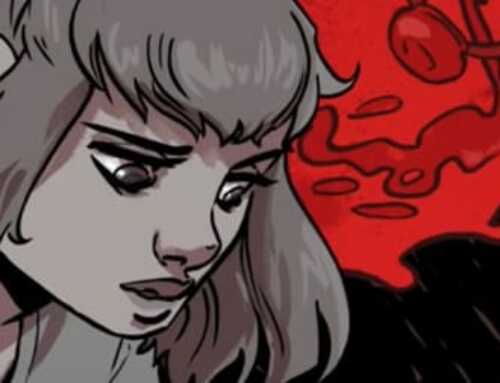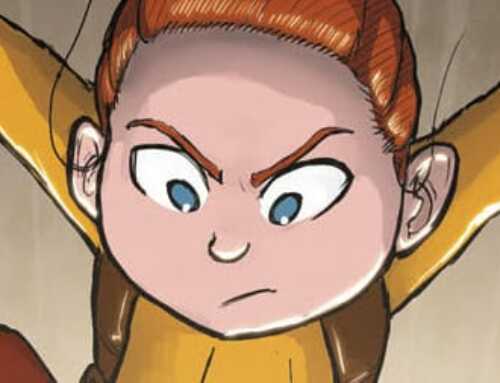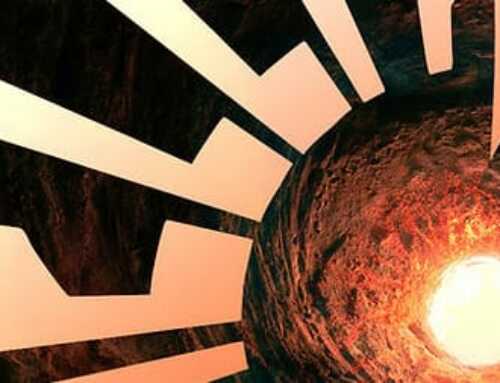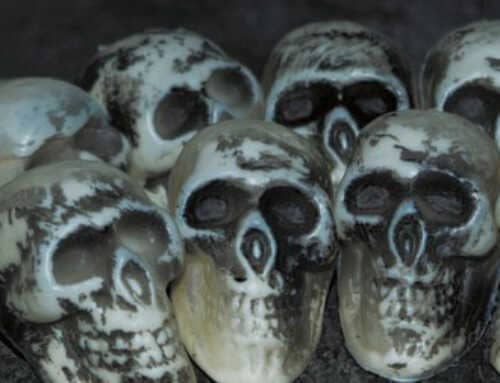Amid the ruins of the old world, desperate remnants of humanity cling to existence, ruled by tyrants and beset by flesh-eating monsters. Bracken roams the barren wasteland, a hard, broken man. Pursued by a vicious warlord, he transports an orphaned boy named Huxley across the desert. On their journey through ravaged cities and desolate terrain, the unlikely companions come face-to-face with devastation and hopelessness, searching for purpose and redemption on the road.
The 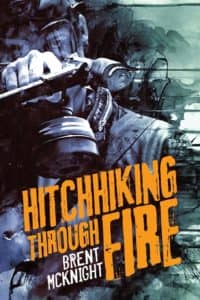 post-apocalypse is an odd setting– on the one hand, it’s almost impossible to do anything new within the confines of the subgenre, as it has been exhaustively explored across every medium. On the other hand, it’s also one of those settings which, if handled well, can always be made entertaining and engaging. Brent McKnight’s debut novel Hitchhiking Through Fire manages to stay in the latter camp thanks to a well-written cast of characters and an eye for cinematic detail. Hitchhiking Through Fire may not do much in the way of reinventing the wheel, but embracing tropes and using them effectively is more than enough to make the novel a fast and enjoyable ride.
post-apocalypse is an odd setting– on the one hand, it’s almost impossible to do anything new within the confines of the subgenre, as it has been exhaustively explored across every medium. On the other hand, it’s also one of those settings which, if handled well, can always be made entertaining and engaging. Brent McKnight’s debut novel Hitchhiking Through Fire manages to stay in the latter camp thanks to a well-written cast of characters and an eye for cinematic detail. Hitchhiking Through Fire may not do much in the way of reinventing the wheel, but embracing tropes and using them effectively is more than enough to make the novel a fast and enjoyable ride.
I think the strongest aspect of Hitchhiking Through Fire may be the novel’s emphasis on character development rather than plot. While Huxley (a young orphan boy born after the end of the world as we know it) and Bracken (a grizzled courier/scavenger/gladiator) definitely have a goal and are physically traveling towards it at all times, the story never feels like it needs to create a timeline or a sense of urgency outside of immediate situations– it’s a cliche, but in this case, the story really is a lot more about the trip itself than the destination. There’s also something to be said for the novel primarily following the perspective of a child being exposed to the cruelties of the wasteland. Huxley grows weary and is forced to mature significantly through the novel, and McKnight does a great job at addressing the traumas and stresses which are heaped on the kid from around chapter three onward. The protagonists feel realistic and fleshed out, and the story benefits from it greatly.
What may leave some readers wanting is the lack of development of the primary villain. Because there are so many pit stops and other hazards on the road from Utah to San Francisco, there isn’t much time spent on the main antagonist, a small-time tyrant named Elwood who spends the bulk of the novel chasing the heroes. It’s not that Elwood isn’t correctly depicted as evil or as a constant threat, it’s just that he isn’t present for the majority of the novel and I would have liked to see a little more direct action from him as well as a slightly clearer motivation.
The world itself may be the most important part of any post-apocalyptic story, and Hitchhiking Through Fire goes to work immediately on establishing the grimy dust bowl zombie-infested West Coast which our characters inhabit. McKnight takes aesthetic and worldbuilding hints from all manner of apocalypse stories, and the resulting mix feels somewhere between Mad Max, The Book of Eli, The Road, and the Fallout franchise. Small details also contribute a lot to the author’s vision– people aren’t just wrinkled, they’re sun-baked and cracking. Dead, burnt forests are meant to evoke the skeletons of decayed behemoths. It’s little touches like this which keep the reader intrigued despite a relatively standard apocalypse.


